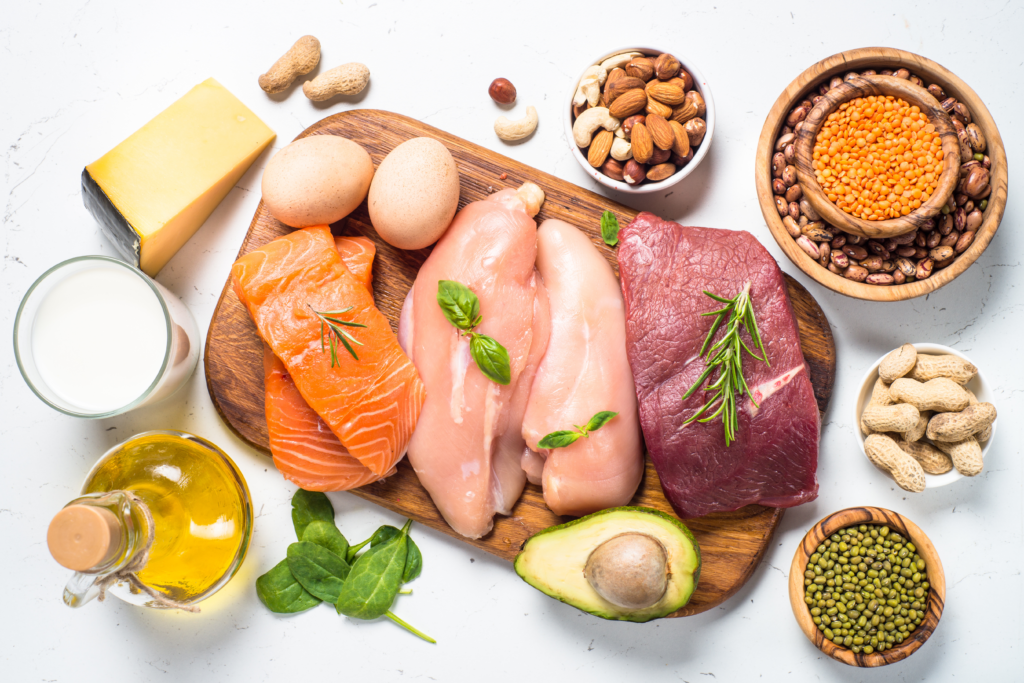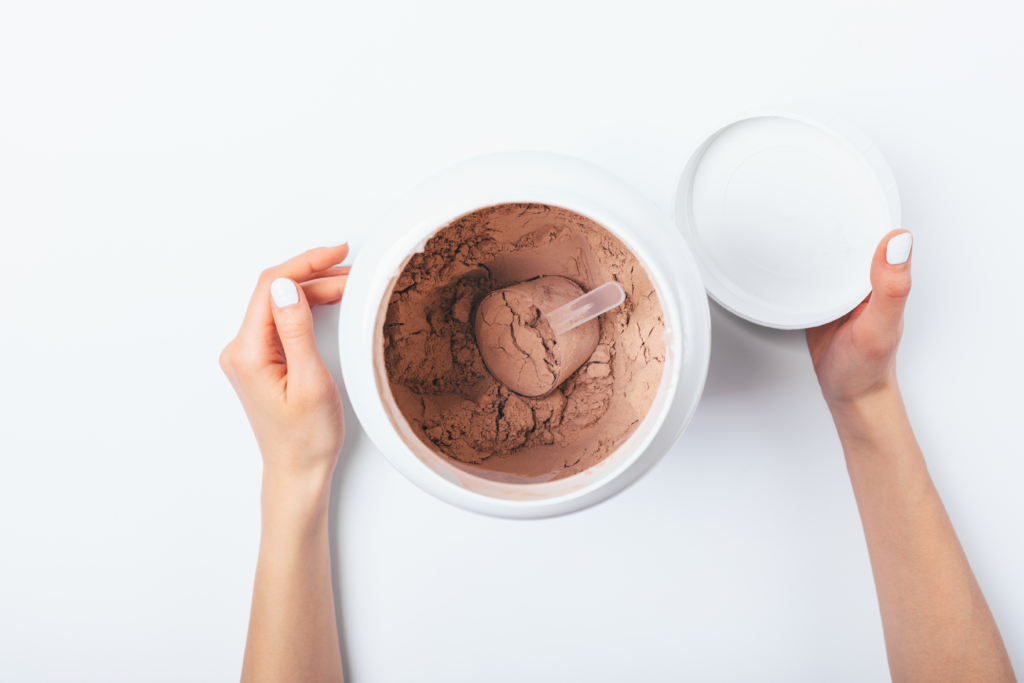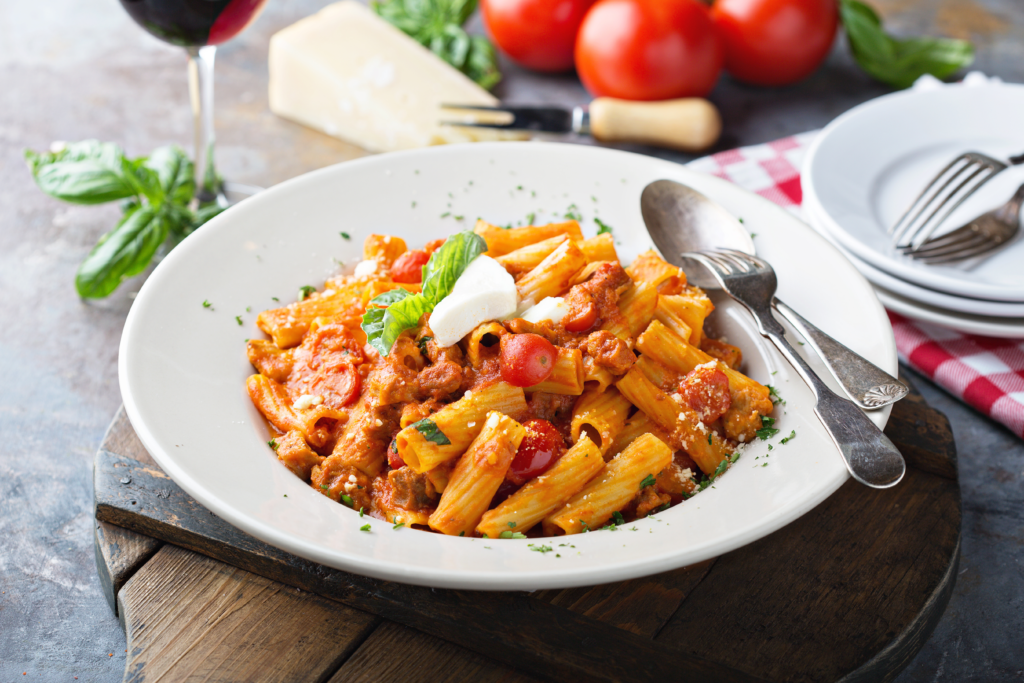Protein: Are you Eating too Much?
October 29, 2021

Protein is such an essential nutrient to our overall health and fitness goals. It helps give tissues and organs their shape, and helps them function the way they should. It is also essential for muscle building and repair, and a portion at meals can help us stay more satisfied and help us avoid feeling hangryyy between meals. No matter if you are a meat-eater, vegetarian, or vegan, protein is an essential part of a healthy diet.
Too Much Protein?
Unfortunately, today’s current diet and fitness culture tends to overestimate the place that this macronutrient should play in our diets. Protein is often seen as a “safe” food whereas all other food options, *cough cough* carbs and fats, are often seen as “bad” or “less healthy.” Fitness and athletic communities often push the idea of consuming at least 1gm/pound of body weight. This simply isn’t necessary and is likely doing more harm than good.

Is Too Much Protein Bad?
When we eat a diet that contains more protein than our body needs, we are likely crowding out other essential nutrients, like carbs and fats. This can lead us to low energy, uncontrolled cravings, poor digestion, and other unpleasant effects. Protein is also highly satiating. Thus, women who eat too much of it may be at a higher risk of low energy availability and abnormal periods. What’s worse? There is often no added benefit for the extra protein. Research shows that CERTAIN individuals MAY benefit from up to 2.2 gm/kg/day. Beyond this small population, protein is just converted to energy even though it’s not the best source.
How Much Protein Should I Eat?
The average individual needs at least 0.8 gm/kg of protein per day. The recommendation for active women and men is to aim a bit higher with at least 1.2 gm/kg/day. Individuals who are looking to gain muscle, are vegan/vegetarian, or do more resistance-based exercise/training can aim for up to 1.8 gm/kg/day. This could mean as little or as much as 65-125gm/day for an active female depending on their weight. Meal based recommendations are typically around 0.25 gm/kg/day, which could mean as little as 12 gm/meal for an active female. The fact of the matter is, most Americans get more than enough of this macronutrient and are by far surpassing these goals.
Keep in mind, the above are just general recommendations. By no means, do you need to count or track your daily grams of protein. We are a nutrition practice of non-diet dietitians and believe that avoiding macro and calorie counting is better for client’s mental AND physical health. Thus, we recommend utilizing the plate method for most of our active clients and athletes. The plate method includes a meal-to-meal goal of dedicating ¼ of your plate to protein from meat or plant-based options. Snacks that include a source of protein are also beneficial. Keep in mind that dairy products, whole grains, and legumes are also sources of protein. Prioritizing high protein snack options and/or meals after weight-based resistance training can result in added benefits. You can check out this list of snack ideas here.

Key Takeaways
As always, keep in mind that your body functions on the bigger picture. Yes, having protein at meals and snacks can be beneficial. BUT, a meal/snack can still be perfectly healthy even without a source of protein. When it comes to food choices, we have to take into account our social, mental, and emotional needs. These needs are just as important as our physical needs in determining health. If you’re craving a bowl of pasta from your favorite Italian restaurant, know that it can certainly be part of a healthy meal that is supporting your overall health and not working against it.
Want to learn how to apply more sports nutrition ideas to a non-diet lifestyle that embraces food freedom? Learn more about our Fueled Fit Balanced nutrition program or check out our services here.
[…] diets are all the rage, research shows that there are no benefits to eating more than 20-25g of protein at a […]
[…] muscle mass and strength. A sports dietitian will be able to calculate your specific energy and protein needs. They can work with you to form a plan to meet these goals through your […]